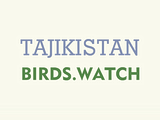search
classification
|
basic information
|
video
|
reports |
Glossy Ibis
Plegadis falcinellus (Linnaeus, 1766)

|

|
|
|
2020-06-16
Sokuluk district, Chuy region |
© Irina Romanovskaia
|
|
Description
Glossy Ibis is medium-sized bird with down-curved long bill. Summer plumage is dark-red-brownish with green and purple metallic gloss on forehead, crown, mantle and wings. In winter plumage upperparts are dark-greenish-brown slightly purple glossed; head and upper-neck are dark-greenish-brown with white edges of feathers. Male is distinguished from female by well expressed crest on head (on females this crest is slightly expressed or just absent), by easy curving of bill and by body sizes. Legs are greenish-black; bill, eye-ring and skin between bill and eye are dark-greenish-brown; eyes are dark-brown. Juveniles is similar on adults in winter plumage but its metallic gloss is much less expressed. Sizes: males - wing 290-306, bill 126-150, tarsus 90-123 mm; female - wing 265-280, bill 100-125, tarsus 80-96 mm.
Biology
Glossy Ibis is rare or accidental breeding migrant. It inhabits seldom man-visited lakes, river channels and islands on Caspian Sea with plenty reed-beds, trees, bushes, near shallow water. In spring Glossy Ibis appears in end of March - early April, migration finishes in end of May - early June. Flocks of Glossy Ibises migrate by wedge or by front-line. It breeds in colonies of several dozen pairs, usually together with Rook, Night Heron, Grey Heron, Great and Little Egret, Squacco Heron and Cormorant, but sometimes Glossy Ibis breeds in single pairs too. Nest is built on bushes and trees (willow) at 8-11 meters hight, from dry twigs and reed stems and lined with soft reeds and grasses; rarely Glossy Ibis builds nest among reed-beds; from reed stems and lined it with green reed leaves. Clutches of 2-5, usually 4 eggs founded from end of April to early July (repeated nesting after destruction of first clutch). Both parents incubate and feed juveniles, which hatch in early June and fledge at age 16-18 days old. Autumn dispersal (adults and young in separate flocks) begins in end July and fluently becomes to migration; most intensive migration passes in end of August - September; some birds linger till mid-October. Glossy Ibis doesn't winter in Kazakhstan.
References
"Птицы Казахстана" том 1. "Наука". Алма-Ата, 1960. Э.И.Гаврилов. "Фауна и распространение птиц Казахстана". Алматы, 1999. Gavrilov E. I., Gavrilov A. E. "The Birds of Kazakhstan". Almaty, 2005.
unidentified birds
Анатолий Таран: Желтогрудый князёк
xxxx: плохо видно, но мне кажется это кулики либо песочники.
хххх: да. это крохаль, но скорее всего средний. длинноносый который. из за красной шеи. много лет не мог определить вид этой птицы. гугл мугл не помогад. [....]














